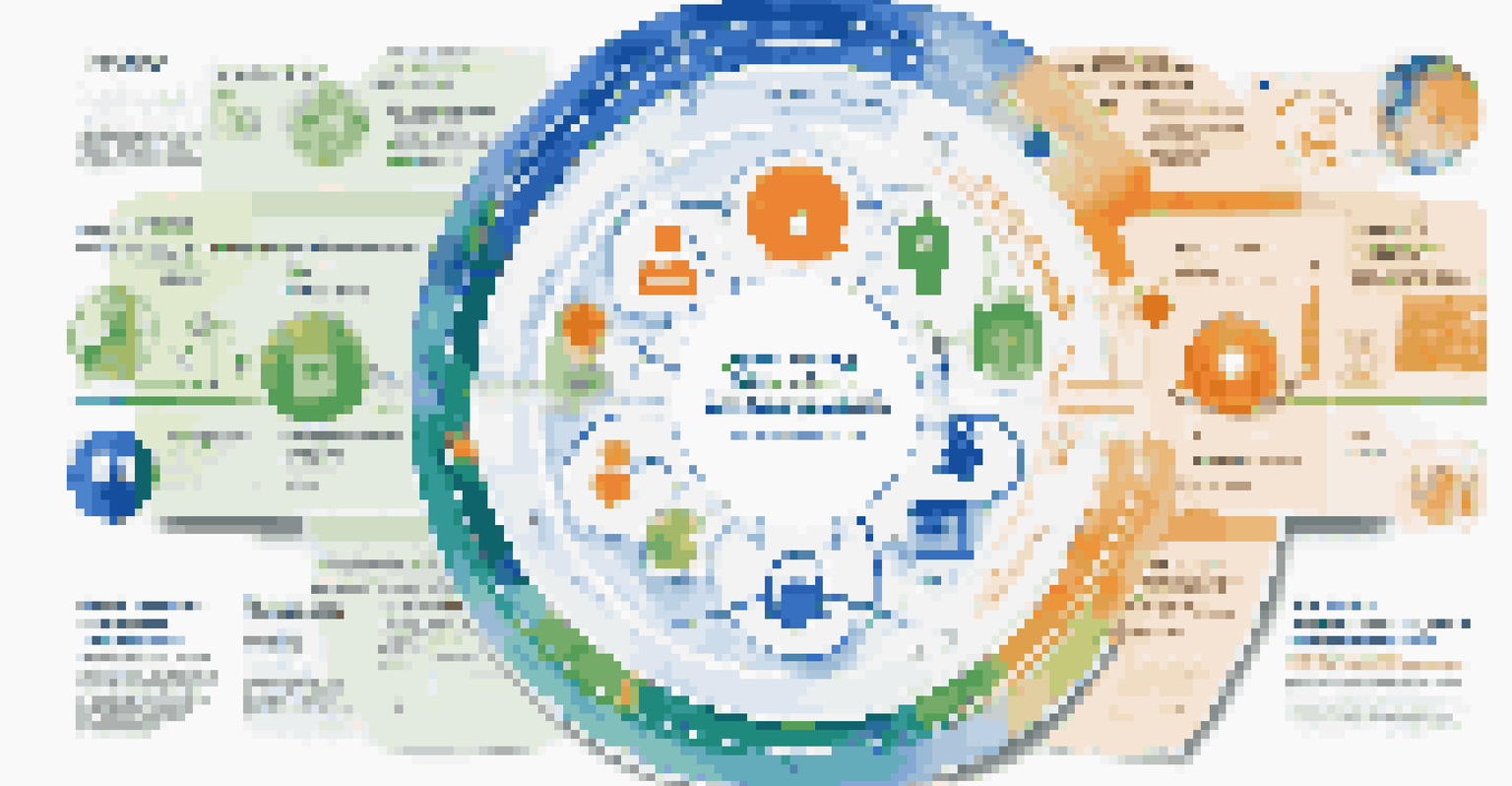Digital Literacy and Cultural Competence: Navigating Diversity

Understanding Digital Literacy in Today's World
Digital literacy refers to the ability to navigate and utilize technology effectively. In a world increasingly driven by digital tools, being digitally literate means more than just knowing how to use a computer. It encompasses skills such as evaluating information sources, creating digital content, and communicating online.
Digital literacy is not just about technology; it's about how we engage with the world around us.
As technology evolves, so does the definition of digital literacy. Today, it includes understanding cybersecurity, data privacy, and the ethical implications of technology use. This broader perspective ensures that individuals can not only use technology but do so responsibly and effectively.
For example, someone who is digitally literate can discern credible news sources from misinformation, which is crucial in our information-saturated society. This skill is especially important in diverse communities where varying cultural perspectives can influence how information is perceived.
The Importance of Cultural Competence
Cultural competence involves recognizing, understanding, and respecting the diverse backgrounds of individuals. It goes beyond mere tolerance; it’s about appreciating differences and fostering inclusivity. In our globalized society, cultural competence is essential for effective communication and collaboration.

When individuals are culturally competent, they can navigate social interactions with an awareness of cultural nuances. This skill is particularly vital in workplaces and educational settings where diversity is prevalent. It helps to create environments where everyone feels valued and understood.
Digital Literacy is Essential Today
In a technology-driven world, being digitally literate means effectively using technology while understanding cybersecurity and ethical implications.
For instance, a culturally competent manager will recognize the importance of cultural holidays for their team members, allowing for more inclusive workplace practices. This not only enhances employee morale but also promotes a sense of belonging.
The Intersection of Digital Literacy and Cultural Competence
Digital literacy and cultural competence are increasingly intertwined in today's interconnected world. As we engage with diverse groups online, our ability to understand cultural contexts becomes critical. This synergy helps to create respectful and effective communication across different cultures.
Cultural competence is the ability to understand, communicate with, and effectively interact with people across cultures.
For example, a digitally literate individual who is also culturally competent can engage in online discussions that consider varying cultural perspectives. This approach not only enriches conversations but also fosters mutual respect among participants from diverse backgrounds.
Moreover, understanding cultural contexts can enhance digital literacy skills, such as creating content that resonates with a specific audience. This combination is particularly valuable in fields like marketing, education, and social activism.
Challenges in Achieving Digital Literacy
Despite its importance, achieving digital literacy can pose challenges for many individuals. A lack of access to technology, resources, or training can hinder someone's ability to develop these essential skills. This digital divide can exacerbate existing inequalities in society.
Furthermore, as technology rapidly evolves, keeping pace with new tools and platforms can be overwhelming. Individuals may feel intimidated by the constant need to learn and adapt, particularly those from less tech-savvy backgrounds.
Cultural Competence Enhances Communication
Cultural competence involves appreciating diverse backgrounds, which fosters inclusivity and improves interactions in diverse environments.
For instance, older adults may struggle with digital literacy due to a lack of exposure to technology during their formative years. Addressing these challenges requires targeted educational initiatives and community support to bridge the digital divide.
Barriers to Cultural Competence
Cultural competence also faces significant barriers that hinder its development. Factors such as prejudice, stereotypes, and lack of exposure to different cultures can create obstacles. These barriers can lead to misunderstandings and missed opportunities for meaningful connections.
Additionally, many people may not recognize the importance of cultural competence, viewing it as an optional skill rather than a necessity. This mindset can prevent individuals from seeking the education and experiences needed to enhance their cultural awareness.
For example, someone who has never traveled outside their hometown may have limited perspectives on other cultures. Encouraging open-mindedness and providing opportunities for cultural exchange are crucial for overcoming these barriers.
Strategies to Enhance Digital Literacy
To improve digital literacy, individuals and organizations can implement various strategies. Providing access to technology through community programs, workshops, and online tutorials can help bridge the digital divide. Encouraging a culture of continuous learning is vital in this fast-paced digital landscape.
For example, schools can incorporate digital literacy into their curricula, teaching students how to evaluate online sources, engage in responsible social media use, and understand data privacy. This proactive approach equips the next generation with essential skills for navigating the digital world.
Education Bridges Digital and Cultural Gaps
Targeted educational initiatives can enhance both digital literacy and cultural competence, empowering individuals and communities to thrive.
Moreover, collaboration with local libraries and community centers can create supportive environments where individuals can learn and practice digital skills. These initiatives foster a sense of community while empowering individuals to become more digitally literate.
Fostering Cultural Competence Through Education
Education plays a pivotal role in fostering cultural competence. Schools, workplaces, and community organizations can provide training and resources to enhance understanding of diverse cultures. This education can take many forms, including workshops, cultural immersion experiences, and discussions on bias and privilege.
For instance, incorporating multicultural perspectives into educational materials can help students appreciate diversity from an early age. This exposure encourages empathy and respect for different backgrounds, paving the way for more culturally competent individuals.

Additionally, promoting inclusive practices within organizations can create environments where continuous learning about cultural competence is prioritized. This commitment not only benefits individuals but also strengthens communities as a whole.